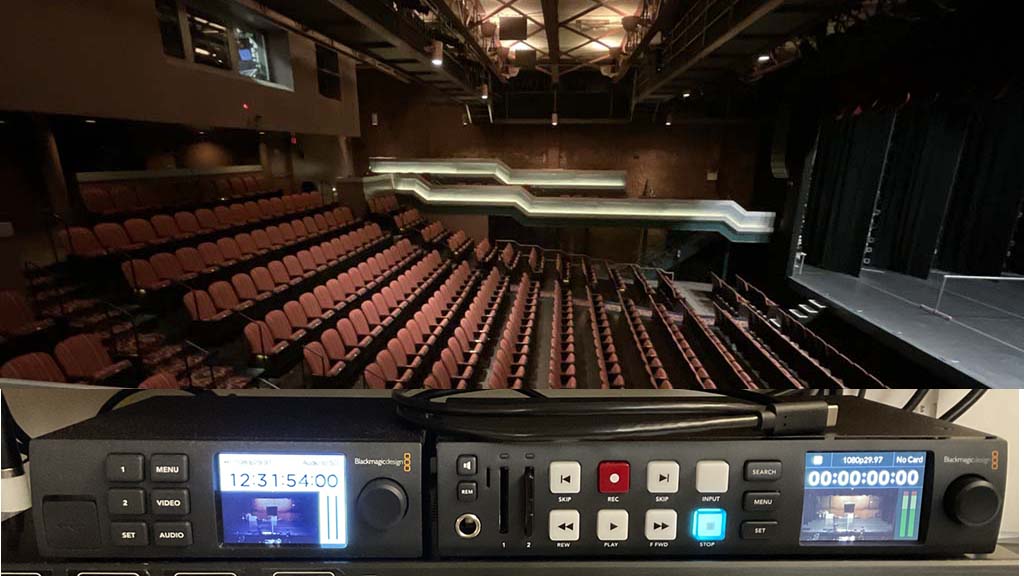Joyce Theater Taps Blackmagic Design for Archival Workflow
Fills nonprofit’s needs at minimal cost

NEW YORK—The Joyce Theater, a 472-seat dance and performance venue in the heart of Manhattan, has supported the dance community since 1982 by providing a home for more than 400 domestic and international companies, as well as by offering an annual 45-to-48-week season, allowing more than 150,000 audience members to experience diverse, popular and challenging performances.
As the theater’s director of production, I oversee numerous aspects of video production, including our practice of providing a video monitor feed to the backstage areas during performances. This can also be used for archival recordings of performances, with the Blackmagic Micro Studio Camera 4K G2 taking a wide shot of the full stage.
The dance companies that perform here use this footage for daily notes, as a record of a particular performance or for teaching purposes for new dancers or stage managers. In the past, we recorded to VHS and then to DVD. Until 2024, we used a consumer handycam, but as digital files are the prevailing format, we updated our own workflow and now use several Blackmagic Design products to achieve this digital archival format.
Upgrade To Blackmagic
As a not-for-profit organization, we had to be mindful of the best way to go about this change. Due to funding concerns and other projects at the theater, we couldn’t just rip out our video workflow and start anew. We had to leave some older equipment in place, which meant we had to consider new equipment that would work with our SDI cabling and distribution points, which are at least 15 years old. We upgraded our handycam to a Micro Studio Camera 4K G2 and implemented numerous Blackmagic Design converters to make it all work.
The Micro Studio Camera 4K G2 is positioned in the back of the theater above the last row of seats, allowing for a wide view of the stage. It is connected to a Blackmagic Mini Converter SDI to Analog 4K with a single analog output to an SDI distribution box that sends an NTSC signal to monitors in several backstage locations. The SDI output on the converter is split to two locations that can handle a higher quality signal, currently set at 1080p29.97.
One branch goes to our stage manager’s monitor. The other branch runs to a Blackmagic Mini Converter SDI Distribution in the production office. This distribution point sends the 1080p signal to a monitor in the green room and to a Teranex Mini Audio to SDI 12G, which combines the audio signal from our sound console and the SDI feed from the camera. From there, a HyperDeck Studio HD Plus broadcast deck provides the recording point, and a video signal is sent to a monitor located in the production office via HDMI.
Integrated Simplicity
The fact that all the Blackmagic equipment works so well together makes the setup easier, and the ability to switch between media types in the recording process is great. On any given day, the performing company may ask for an archival recording of a rehearsal or performance, and some companies also request archival recordings with the headset feed for teaching and/or training purposes.
We are set up to add the headset feed into the audio feed, either in stereo or mono, as we frequently pan the show feed to one channel and the headset feed to another so that the company can practice and train cue calling with or without the headset feed.
The Blackmagic gear, particularly the converters, allows us to better serve the companies that perform here with minimal cost and without having to endure a huge overhaul. It’s difficult for any small arts organization to upgrade equipment, but the companies gain added benefits by having the archival recordings balance the cost. We anticipate many more years of success in sustaining dance, sharing the art form with audiences and supporting the companies that come through our doors.
More information is available at www.blackmagicdesign.com.
Get the TV Tech Newsletter
The professional video industry's #1 source for news, trends and product and tech information. Sign up below.
Jeff Segal is director of production at The Joyce Theater in New York.
